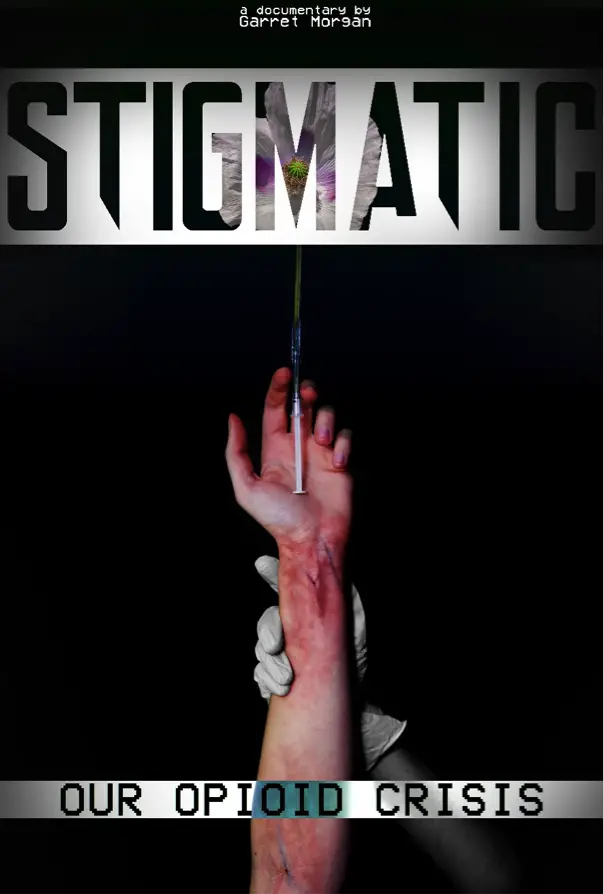Depending on your perspective, the 2010s can be remembered in a number of negative ways: as the years that followed the 2008 recession, as a time of unprecedented political parity or even as a period of unremitting terrorism.
Statistically speaking though, the decade will certainly be remembered, at least in part, as a period of reemergence for the opioid epidemic. According to the CDC, the number of heroin-related deaths quadrupled from 2002-2013, and today, opioid overdoses kill around seventy-eight Americans daily. Over 33,000 people died in the U.S. of opioid overdoses in 2015 alone.
Yet, it’s likely that these horrific stats aren’t news to you. Often, the epidemic is portrayed through voiceless numbers and grotesque projections. The news coverage will give you the statistics of the thousands of dead, but it rarely provides an in-depth look into the real struggle of drug addicts across the country.
As a result, the faceless numbers are perceived as the unfortunate victims of the failure of the “War on Drugs,” rather than the lost friends, teachers, mothers, siblings and fathers that they are. Distancing the personal element from the discussion of the opioid epidemic distracts from the main root of the issue, while failing to account for the personal struggle and hopelessness present in communities throughout the U.S.
In their documentary, “Stigmatic, Our Opioid Crisis, ” film majors Garret Morgan, Keith Schnabel and Sammi Schenkel aim to refocus the lens of the opioid epidemic, moving the discussion away from theoreticals and toward reality in effort to stimulate the empathy of viewers. I had a chance to talk to with Ferris State student, director and co-writer of “Stigmatic” Garret Morgan and discuss the potential impact of the film.
Morgan, now a senior at Ferris State majoring in Television and Digital Film Production, has used his college experience to delve into the documentary field. During the height of the Flint water crisis, Morgan traveled to Flint, Michigan, to interview a few of the many victimized residents and get involved with several local water-drives.
His involvement not only represents the lengths Morgan is prepared to go in order to chronicle a pressing story, but the experience also served as his first documentary-making experience. Soon after, one of Morgan’s high school classmates passed away from an opioid-related overdose. After his work with Flint and the death of his friend, Morgan was inspired to take on his most challenging task to date—documenting the opioid epidemic in his hometown.
With the help of his producers Scnabel and Scenkel, Morgan worked on the project for almost a year, as he had to split his time between filming and attending classes. Like many student filmmakers, Morgan admits that the process was pretty extemporaneous. “Most of the time,” he says, “we were flying by the seat of our pants. We didn’t really know what we were doing.”
The biggest struggle the young filmmakers encountered early on was finding a pointed direction for the film, as filming such a controversial issue certainly could drive the documentary in numerous directions. For Morgan, it wasn’t until an addict they had interviewed suffered through a devastating relapse during the filmmaking process that he found the film’s direction.
“Hearing how alone she felt, even when she’s got people in her life to help her, the cultural stigma makes it hard for those people to seek help. That’s when I knew the documentary would be a mouthpiece for those people.” By placing a face on the growing epidemic, the “Stigmatic” crew had found their message. The film had become a personal platform for the worst drug epidemic in modern history.
As a result of their newfound focus, the film crew expanded the scope of their movie beyond addicts and began chronicling the many other individuals affected by the epidemic. By the conclusion of the taping process, Morgan et al. had interviewed parents whose kids had struggled with addiction, medical professionals, an EMT director, a pain physician, two probate judges (one former, one current) and recovering addicts.
To truly understand the struggle of the opioid addict, you first have to understand the stigma behind addiction. Most people, even today, see addicts as products of their own destruction, primarily because most fail to understand why addicts don’t just quit.
To help viewers understand the power of heroin over its users, they made sure to ask the questions that skeptical audiences would ask, one of which was: Why don’t they quit cold turkey? The film reveals that without a long-term treatment, such as methadone rehab, which is costly and time-consuming, heroin addicts relapse over 90 percent of the time.
So, they asked, if quitting cold turkey is rarely a feasible option, why not seek help? It turns out that since heroin is still classified as a schedule I drug, possession can get an individual up to a year in prison as a first-time offender.
While a recent study showed that most Americans prefer rehab for drug addicts over punishment, users are still significantly stigmatized. To many Americans, drug addicts are societal outcasts at best, and dangerous criminal at worst.

In Morgan’s experience, the problem goes further. Because drug addicts have been pushed to the margins of society, and drug addiction has, in the past, largely been swept under the rug, addicts have become the “other.”
As Morgan explains, “People tend to paint addicts in this group. It’s similar to how racism functions. You’re grouping a set of people so you can judge them. That’s how it is with addicts. Some people view them as sub-human.”
In response to the human tendency to generalize, Morgan tried harder than ever to create a film that evoked empathy, one of the few antidotes to the mischaracterization of a large group of people; in order to make a point, he realized, they need to see the human stories behind addiction.
“People still don’t realize how far-reaching the epidemic is. They don’t want to feel like it’s close to home. They need to feel disconnected from it. Truth is, you don’t know how personal and far-reaching it can be until you talk to someone who’s been affected,” he says.
With “Stigmatic,” in an effort to show that addicts are people like you and me, audiences are forced to see the faces affected by the crisis. The hope is that once you put a face to the epidemic, it can help eliminate the stigma. By making audiences face hard truths, Morgan thinks Americans can begin to tackle the root issues with opioid overuse.
The filmmakers will be submitting the work to as many festivals as they can, but Morgan is also organizing screenings at local organizations in October and November. Eventually, he plans on making the film available on Vimeo for everyone to be able to see.
Check out updates for the “Stigmatic” documentary on Facebook, Twitter and their direct page.

















